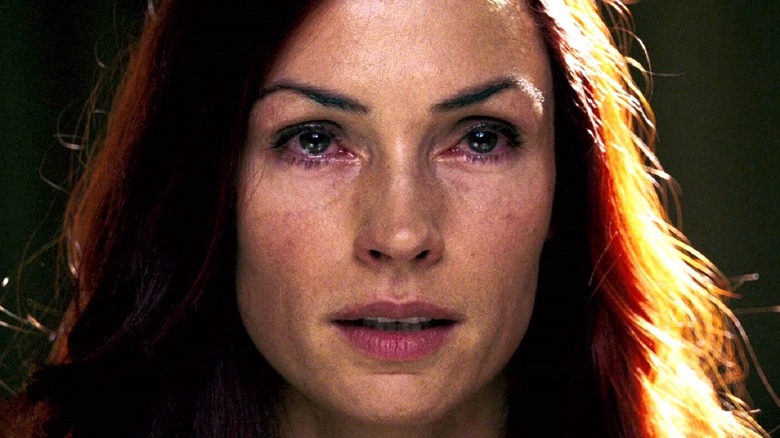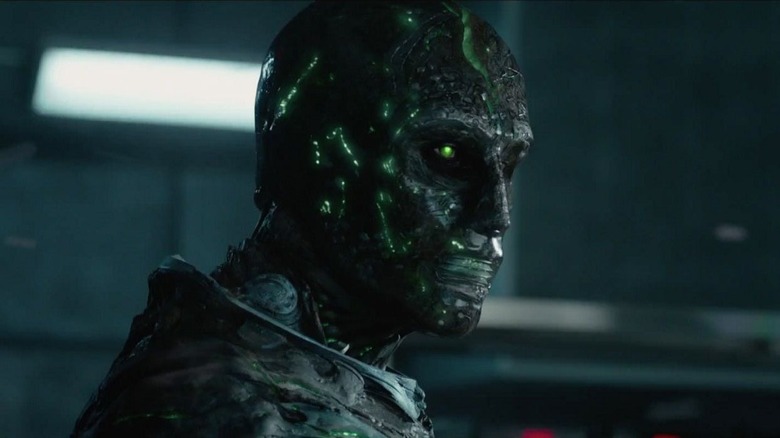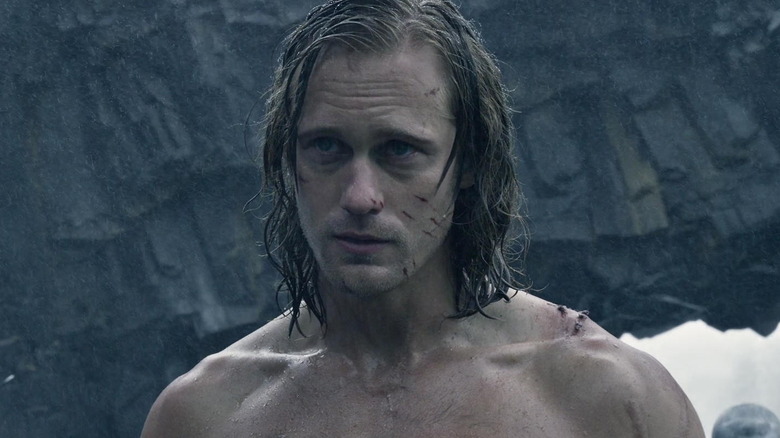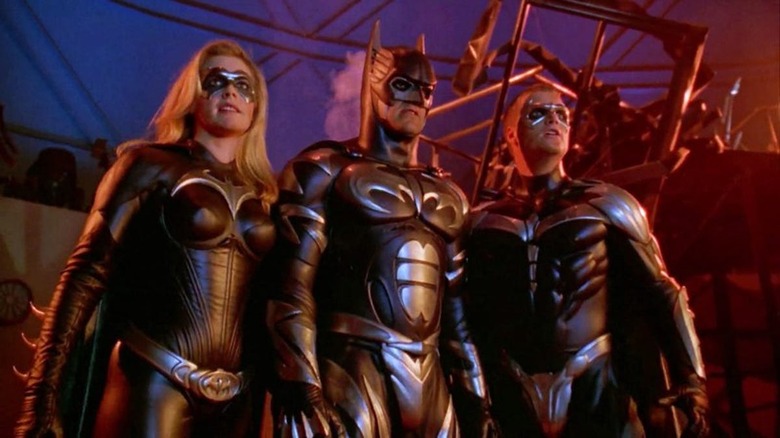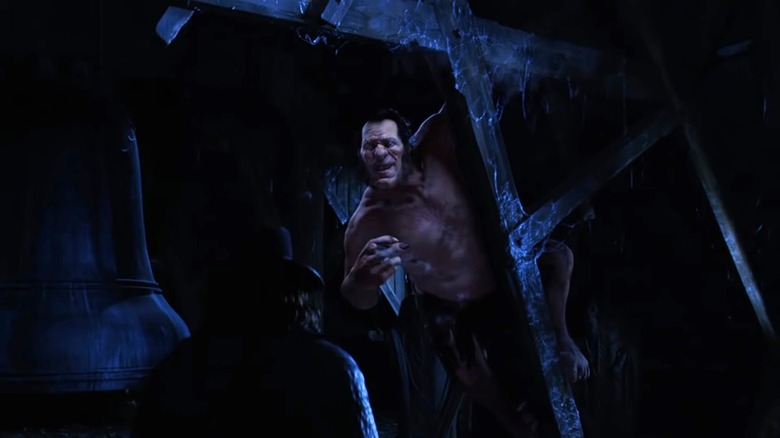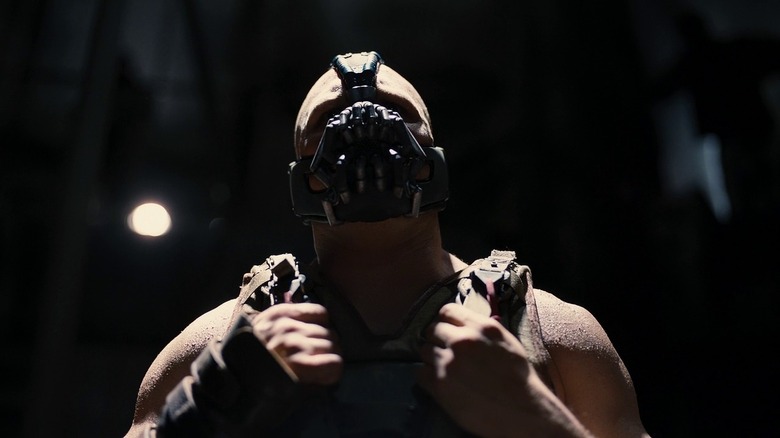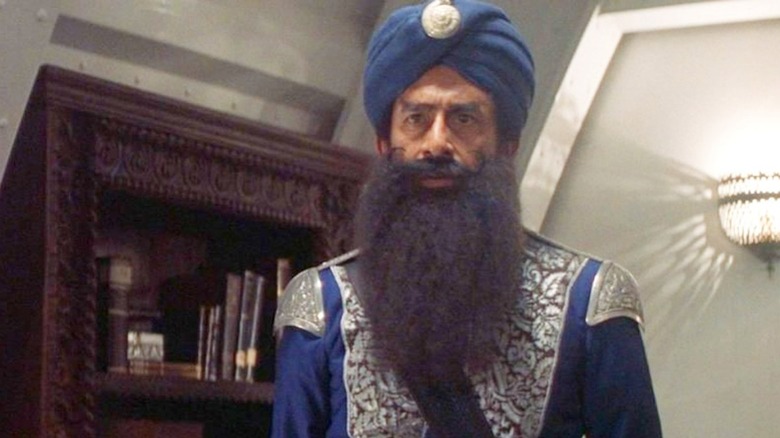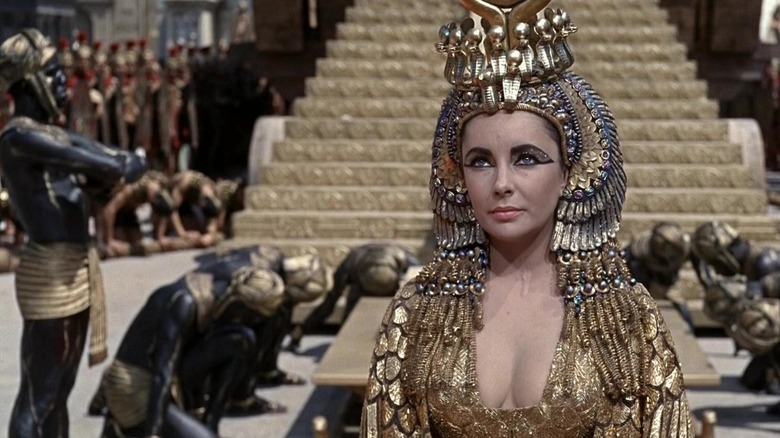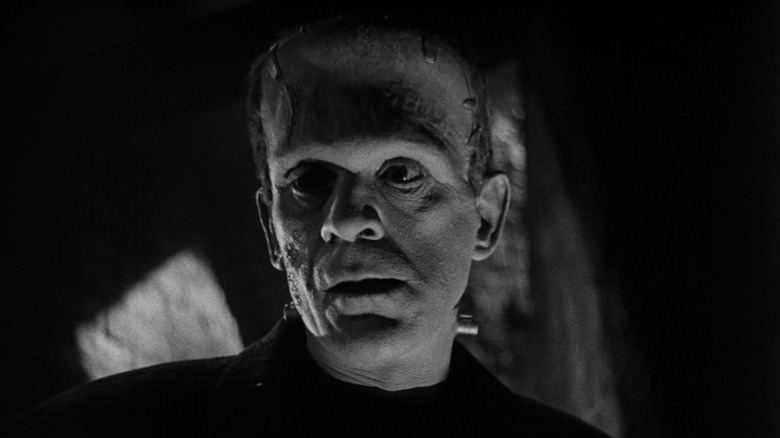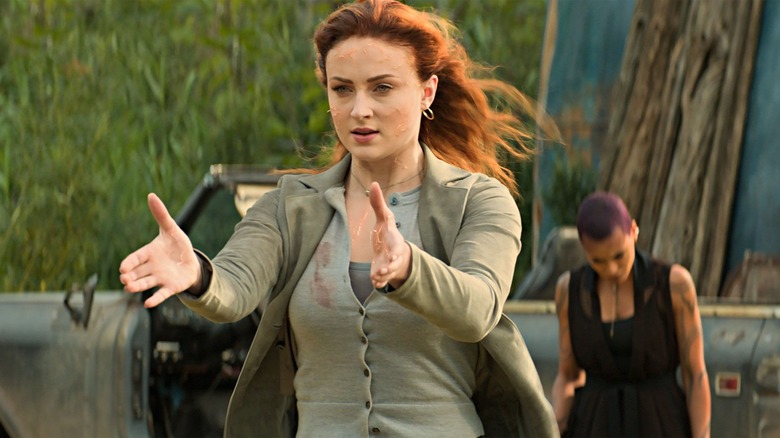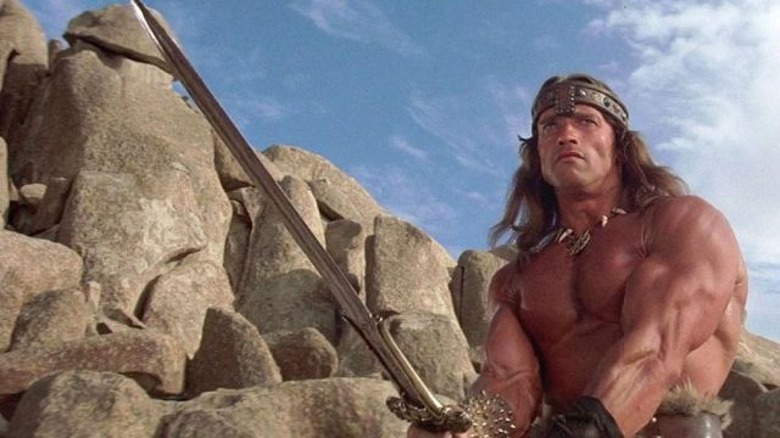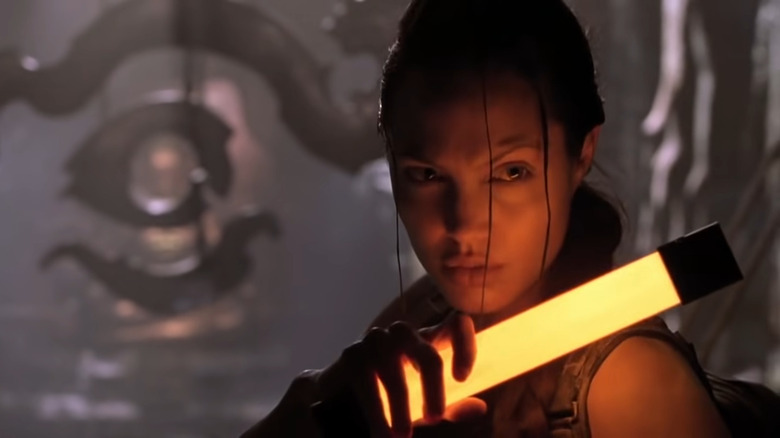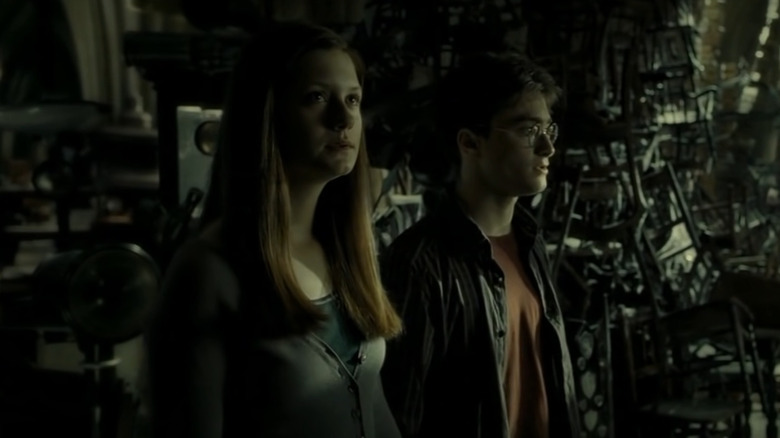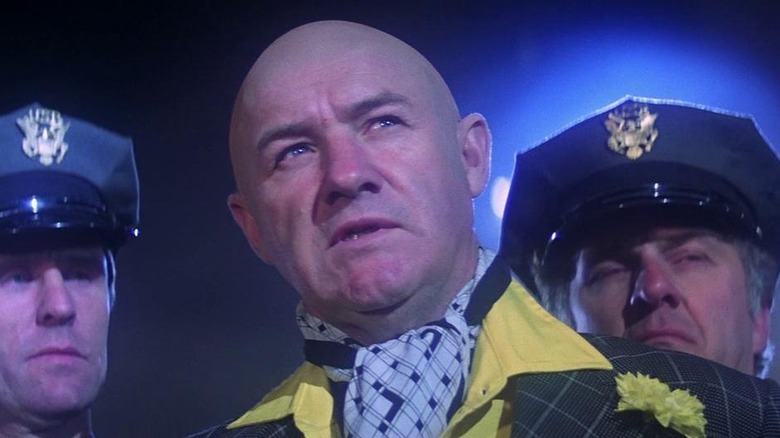Iconic Characters That Movies Can't Seem To Get Right
Nowadays, people complain that Hollywood has become too dependent on adapting existing novels, comics, video games, etc. But the truth is the film industry has always relied heavily on existing IP with inbuilt fanbases. Movies like "The Wizard of Oz," "The Godfather" trilogy, and "To Kill a Mockingbird" did very well with adapting already-popular content for the big screen.
Sometimes Hollywood does a good job of adapting the source material, staying faithful to the original plot and creating a cinematic adaptation that charms critics and fans alike. Other times, audiences aren't so lucky, and instead, we get a mish-mash of storytelling where the film is at odds with the intentions of the source material. This can be most obvious when it comes to the big-screen depiction of beloved characters.
These heroes and villains delighted fans in comic book panels or on the printed page, but when they made the jump to movies, they ended up getting the short stick with puzzling, unsatisfying adaptations — no matter how many times filmmakers have tried to get them right. So let's take a look at such characters that Hollywood just doesn't seem able to make work in films even after repeated attempts at nailing their characterizations.
Doctor Victor Von Doom
If you asked fans to name the best comic book villains of all time, Doctor Victor Von Doom would figure near the top of the list. A long-time enemy of the Fantastic Four, Doom is one of Marvel's greatest characters — someone who can present a threat not just to the Four but the entire multiverse.
In the comics, Doom is a scientist, warlock, politician, and a true leader among men. His iconic face and body armor hide one of the most brilliant strategic minds in existence, and Doom has used his brains to take on and win against god-like beings. Doom is also not a one-note "evil" guy but a deeply tragic figure and someone who's extremely pragmatic, always having a good reason for his most ruthless actions.
Unfortunately, all this magnificent complexity and high-minded villainy fails to translate to the big screen. In the 2000s-era "Fantastic Four" movies, Doom is just some scientist guy who randomly gets superpowers, tries to attack the Four, and gets his butt kicked. We see another version of Doom in the 2015 reboot, this time reimagined as a computer scientist turned madman who wants to kill off all of humanity after going insane because of his interdimensional travels. Even actor Toby Kebbell admitted his 2015 incarnation was a misfire, saying (via CinemaBlend), "I truly believe Doom is an awesome villain ... and they kind of always just do something goofy with it. It's a shame, it's a shame."
Tarzan
Before DC and Marvel gave us superheroes to root for, there was Tarzan, King of the Jungle. Created by Edgar Rice Burroughs, the character first appeared in 1912's "Tarzan of the Apes," and he was deeply a character of his times in terms of origin story and the nature of his adventures.
Tarzan's fictional backstory involves being abandoned in the African forests as a young child after his parents are killed. Raised by a group of apes, Tarzan has little use for Western civilization and prefers to live in the forests even after moving to England to become a member of the aristocracy. Throughout Tarzan's original adventures in the novels, you notice recurring plotlines relating to outdated themes like the idea of the "noble savage," "racial superiority," and "uncivilized natives" who must be taught their place. Naturally, making a modern hero out of a character deeply entrenched in concepts that are considered repulsive today is an uphill task for modern filmmakers.
Newer versions of the character try to frame Tarzan as working alongside local African tribes rather than ruling over them as the "King of the Jungle." But these versions haven't been well-received by audiences. The most memorable recent incarnation of Tarzan was in the 1999 Disney animated movie, which changed major aspects of the character's backstory from Burroughs' work, making it more comedic and kid-friendly, thus the wise-cracking animal sidekicks and keeping Tarzan in the jungle at the end instead of leaving for England as in the novels.
Batgirl
Batman is one of the most popular superheroes in history, yet despite the Caped Crusader being such a recognizable superhero, few of his supporting castmates from the comics have been big hits on the big screen.
The thing is, Batman has a large coterie of superhero allies in the comics who rarely get a mention in the movies. One of his most important allies is Barbara Gordon, aka Batgirl, daughter of Commissioner James Gordon. Aside from being a noble hero in her own right, Barbara has one of the most tragic character arcs in the comics when she gets attacked by the Joker and permanently confined to a wheelchair. Refusing to give up, Barbara finds a second life as the cyber-hacker vigilante Oracle.
Unfortunately all this backstory has never been shown on the big screen. "Batman & Robin" reimagined Barbara (Alicia Silverstone) as the niece of Batman's butler who likes to drive fast cars and stumbles into becoming Batgirl after having the costume handed to her. The Leslie Grace "Batgirl" movie was canceled before it could ever see the light of day. And there doesn't seem to be any plan to include Barbara in the two separate "Batman" franchises currently in development under Matt Reeves and Todd Phillips.
Jekyll and Hyde
Long before horror movies popularized the idea of regular, everyday guys who transform into maniacal killers in secret, Scottish author Robert Louis Stevenson wrote a seminal novella on the subject entitled "The Strange Case of Dr. Jekyll and Mr. Hyde." In Stevenson's work, you see many of the "split identity" tropes that have been used by filmmakers in modern times.
Dr. Jekyll and Mr. Hyde themselves have grown to become iconic characters, with Jekyll being the noble yet tormented heroic figure and Hyde being his uncontrollable alter ego that delights in causing mayhem. However, movie tends to depict Jekyll and Hyde in a very different light than Stevenson intended — especially when it comes to Hyde's appearance.
In the original novel, since Jekyll is essentially a good person, his villainous alter ego is described as "smaller, slighter, and younger than Henry Jekyll." But movies like "Van Helsing" and "The Mummy" insist on showing Hyde as an overpowering figure, sometimes literally, more closely resembling the Hulk than the scrawny little villain that Stevenson originally wrote about. Strangely enough, the movie that got this aspect of Hyde right was 1996's "The Nutty Professor," where the antagonistic "Buddy" was much smaller in size than his heroic alter ego Sherman Klump (Eddie Murphy).
Bane
In the '90s, there was an explosion of comic book content designed to push the limits of violence and gore. And one of the most successful creations of '90s DC Comics is a character who seems to embody all the excesses of that era — the supervillain Bane.
Born and raised in a brutal prison, Bane was first introduced in "Batman: Vengeance of Bane #1" (January 1993) as an extremely powerful and intelligent adversary in a luchador mask. Bane could also use a drug called Venom to further boost his strength, making him the only villain who could beat Batman at both a physical and mental level.
Unfortunately, Bane's first cinematic appearance focuses on his physical strength instead of his mind. The version of the character that shows up in "Batman & Robin" can't even talk, let alone make any sort of a masterplan. Tom Hardy's Bane from "The Dark Knight Rises" is closer to the comics, but he's missing the Venom drug from his comics backstory, and he's ultimately reduced to just being a super strong lackey working for the real villain, Miranda Tate, aka Talia al Ghul (Marion Cotillard).
Captain Nemo
Hollywood has never had a lot of luck with pirate characters. Up until Captain Jack Sparrow came along, the only movie pirate with any significant currency was Captain Nemo — except calling the character a pirate does a disservice to his backstory as laid out by writer Jules Verne in "Twenty Thousand Leagues Under the Seas" and "The Mysterious Island."
In the novels, Nemo is the son of an Indian king who was forced to flee from his home after the British imperialist army attacked. A scientific visionary, Nemo had his special submarine, the Nautilus, built from parts from all over the world, and he took to roaming the seven seas with his crew. All the while, Nemo burned with a hatred against the British Empire and dreamed of taking revenge against the foreign interlopers who'd conquered his kingdom.
Unfortunately, all that complex backstory is thrown out the window for the big-screen adaptations of Captain Nemo. Most film versions of the character don't even bother making him Indian, with actors like James Mason, Herbert Lom, Patrick Stewart, and Michael Caine playing him in various capacities. Naseeruddin Shah was the only Indian actor to play Nemo in "The League of Extraordinary Gentlemen," but the submarine Nautilus got more attention than Nemo in that film.
Cleopatra
The role of the mysterious siren has been around since the earliest days of cinema. She's the woman with the exotic clothes and accent who can send men wild with a single glance, the woman who the hero and villain can spend the entire movie fighting over. And one of the oldest Hollywood sirens is Queen Cleopatra.
From Elizabeth Taylor in 1963's "Cleopatra" to Monica Bellucci in 2002's "Asterix & Obelix: Mission Cleopatra," most movies depicting the ancient queen like to focus on her overwhelming beauty and the fact that she was able to seduce not one but two powerful Roman leaders — Julius Caesar and Mark Antony. But the truth is, aside from the fact that most of the actresses who've played her probably aren't even the same ethnicity as the real-life Cleopatra, claims of her beauty have also been greatly exaggerated by Hollywood.
Most depictions of Cleopatra that survive on coins and as sculptures depict her as a pretty ordinary looking woman. The Greek historian Plutarch put it rather bluntly when he wrote, "For her beauty, we are told, was in itself not altogether incomparable, nor such as to strike those who saw her." It's been speculated that Cleopatra was able to charm so many men mainly due to her wit and intelligence rather than her looks. But that angle doesn't fit very well with a visual medium like cinema, where it's much easier to show men falling for a radiantly beautiful Cleopatra.
Frankenstein's monster
First thing's first — we're talking about Frankenstein's monster here, not Frankenstein himself. See, Frankenstein is the lead character of Mary Shelley's 1818 horror novel "Frankenstein; or, The Modern Prometheus." He's a brilliant doctor obsessed with understanding and perfecting a way to create life and bring back the dead.
In the course of his research, Dr. Frankenstein builds a monster out of dead human body parts, successfully reanimating the multi-corpse structure and giving it human intelligence. This new creation is Frankenstein's monster, and he's appeared in many movies over the decades as a slow-moving, barely comprehensible, simple-minded creature. But that's not how the monster appears in the original novel. In Shelley's story, the monster is extremely agile, fast, powerful, and self-reliant.
He's also highly intelligent, able to speak multiple languages and strikes a hard bargain with Frankenstein to furnish him with a mate he can start a family with. The monster from the novel is not a literal superhero as in Aaron Eckhart's "I, Frankenstein" but a cunning, articulate, yet deeply tragic figure who both loves and hates his creator and its own existence. The closest thing to the book is 1994's "Mary Shelley's Frankenstein." Robert De Niro plays a version of the monster that hews closely to the novel. But he's distinctly more handsome than his absolutely monstrous-looking book counterpart, and his intelligence is said to be a result of retaining memories from the brain of the corpse he's made out of rather than natural ability.
Jean Grey
Quick, name an X-Men member who isn't Wolverine or Professor X. And no, Deadpool doesn't count. Chances are, if you only know the X-Men through the movies, you tend to see most of them as one big mass of side characters with little in the way of a distinguishable personality beyond feeling isolated from the rest of humanity because of their powers.
But the X-Men who show up in Marvel Comics are far more multi-dimensional and interesting. Case in point — Jean Grey, the most important X-Men member after Professor X, who has arguably the most iconic comic arc in the history of the X-Men, "The Dark Phoenix" saga. And yet, the Jean who shows up in the movies rarely lives up to her potential as both the greatest hero in the X-Men series and its most terrifying villain in her role as the Dark Phoenix.
So far, there have been two separate live-action attempts to bring the "Phoenix" saga to the big screen, and both attempts have been botched by the filmmakers. The problem is Jean in the movies seems very passive, following Professor X's orders until it's time to turn into the Phoenix. The live-action Jean never goes on the turbulent and highly dramatic emotional journey from the comics that forces her Phoenix persona to come forth. Due to this lack of character development, the live-action Phoenix feels like a deus ex machina device to move the plot forward rather than a fully fleshed-out character.
Conan the Barbarian
Some pop culture figures become archetypes of a particular genre for all future generations. For example, what's the first thing that pops into your mind when you think of the word "barbarian?" Chances are you thought of a guy named Conan — a massive, loincloth-wearing warrior with a giant sword and an all-consuming rage.
Conan first became popular in movies when a young Arnold Schwarzenegger played the role in 1982's "Conan the Barbarian." The role turned the muscular actor into an action star, and the movie showcases Conan as a well-meaning brute who needs the help of his wily comrades to succeed in various quests. This idea of Conan being a guy who's better at swinging his sword than thinking his way out of situations has persisted over the years, and it followed the character into the 2011 reboot starring Jason Momoa as a version of Conan who feels closer to Khal Drogo.
But in the original novels written by Robert E. Howard, the character was anything but dumb. In fact, Conan was well-known for being remarkably erudite and eloquent. Consider the time he expressed his admiration for poetry as an artform. "A great poet is greater than any king," Conan states in "The Phoenix on the Sword," adding, "[The minstrel's] songs are mightier than my scepter, for he has near ripped the heart from my breast when he chose to sing for me." Can you imagine Schwarzenegger or Momoa's Conan ever saying something that deep?
Lara Croft
It's no secret that Hollywood is in dire need of compelling female action heroes. Aside from the stray Sarah Connor or Imperator Furiosa, the action movie landscape is largely dominated by large men with bulging biceps and more guns than they know what to do with. And yet Hollywood has been sitting on the perfect female action star all this time.
Lara Croft was the protagonist of a series of action-adventure video games called "Tomb Raider" that blew up in popularity in the late '90s. As the name of the franchise suggests, Lara is an adventuring archeologist with a penchant for raiding tombs. She's a highly skilled combatant, escape artist, linguist, and detective, and she possesses any other skill the story needs her to have to win the day.
It can be easy to imagine Lara leading her own movie franchise as a combination of James Bond and Indiana Jones. Yet the two attempts that Hollywood has made to turn the character into an action movie star have given mixed results. The Angelina Jolie version of Lara existed in a world too campy to be taken seriously, while the 2018 reboot starring Alicia Vikander erred too much to the other side, taking all the fun out of the character in its desire to be "gritty." Fans are still waiting for a movie as good as the 2013 "Tomb Raider" video game.
Ginny Weasley
Few novels in history have enjoyed the widespread popularity of the "Harry Potter" books. The series was a publishing phenomenon before Hollywood jumped on the bandwagon, churning out eight movies based on the novels depicting the journey of the titular Harry on his quest to defeat the dreaded Lord Voldemort.
What made the franchise so beloved was the host of fascinating and likeable side characters, most of whom translated well to the big screen. But some weren't so lucky — like Ginny Weasley, who in the books is a fiery, funny, intelligent character Harry falls in love with. Fans of the novels remember Ginny as someone who's unafraid to stand up to bullies and who speaks her mind to everyone all the time.
Unfortunately, the movies do a poor job of reflecting those qualities in Ginny, played by Bonnie Wright. The character is a pale shadow of her book self in the films, with hardly any important lines or scenes to showcase her spunky nature. Ginny's relationship with Harry is also a lot more subdued, to the point where you wonder why the two ever got together given their noticeable lack of chemistry.
Lex Luthor
If the Joker is the greatest villain from Batman's rogues' gallery, Lex Luthor is the equally iconic archenemy to Superman. At least, that's the way it shakes out in the comics. Despite being an ordinary mortal, the comics version of Luthor actually feels like a credible threat to the Man of Steel in a way that no other villain from the hero's mythology does.
But the movies are a different story. Luthor is frequently seen in live-action "Superman" movies, but he rarely comes across as a foreboding figure. The version of Luthor played by Gene Hackman is way too campy to be threatening, with little evidence of the laser-focused businessman or calculating genius from the comics who's always three steps ahead of his enemies. Kevin Spacey could've brought those qualities to the character in "Superman Returns," but he instead chose to follow Hackman's lead in making Luthor a hackneyed Bond villain.
Then came Jesse Eisenberg's take on Lex Luthor in the DCEU, and fans were left scratching their heads, wondering what to make of the character. Eisenberg plays Luthor as a twitchy, nervy millennial with a high-pitched voice, somehow managing to seem even less threatening than Hackman's version of the character. So far, the closest thing to a live-action version of Luthor from the comics was seen on the TV show "Smallville," where Michael Rosenbaum managed to add great depth and intelligence to the role.
